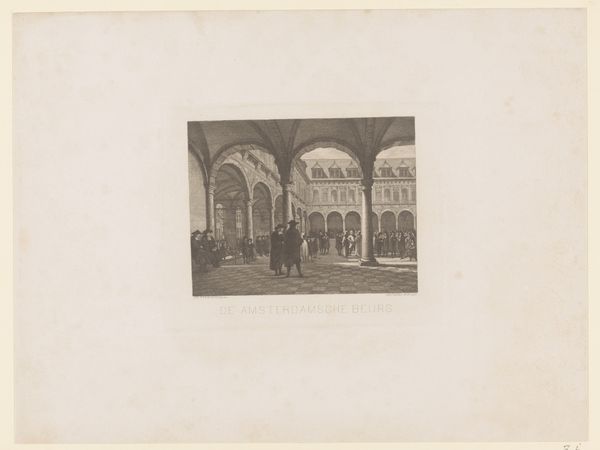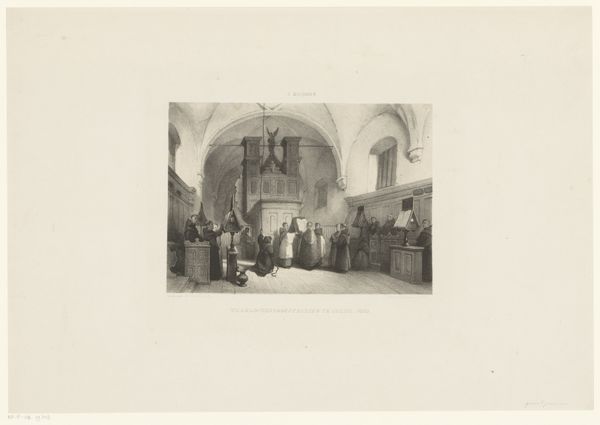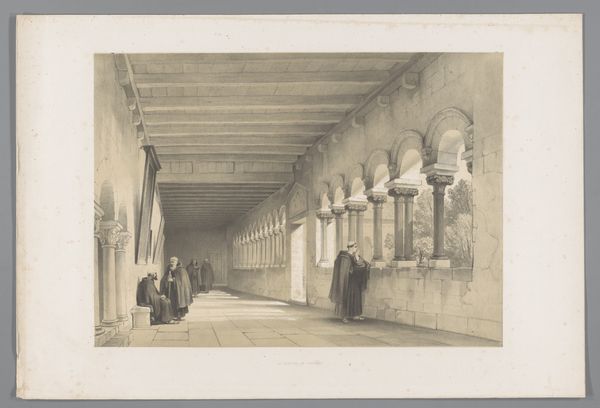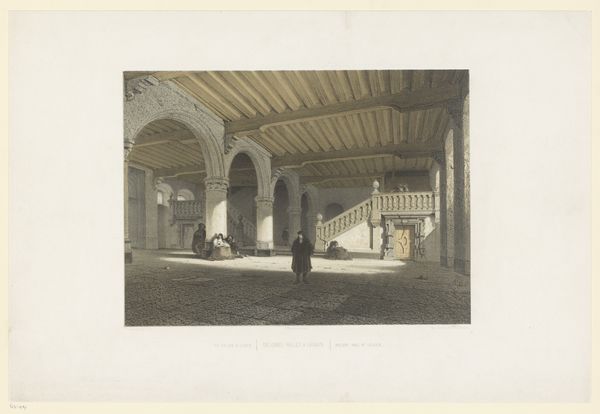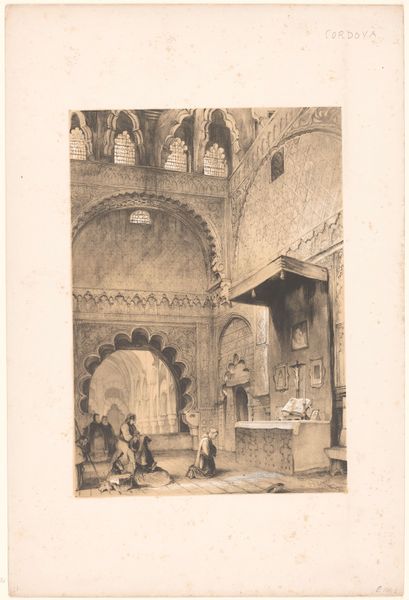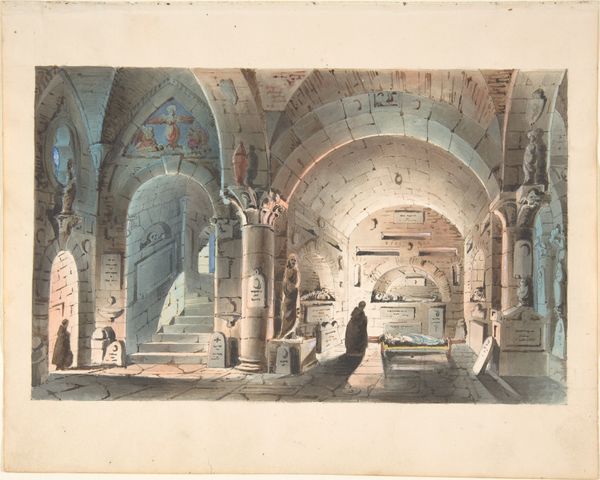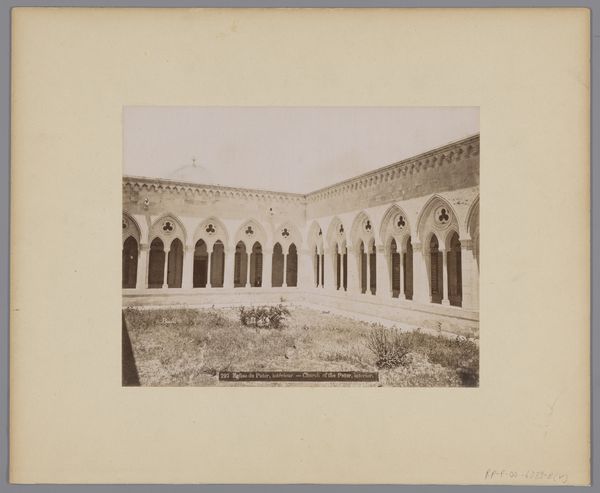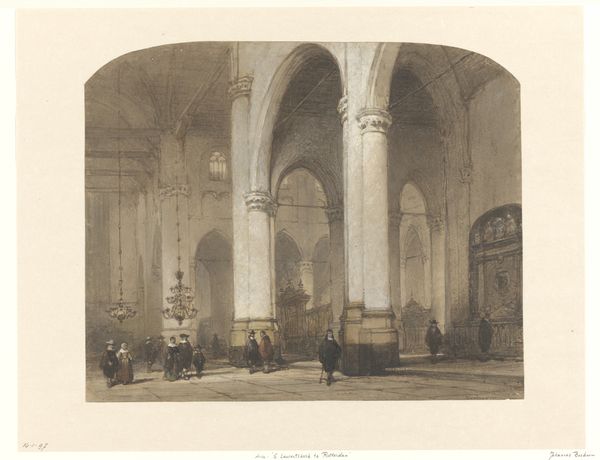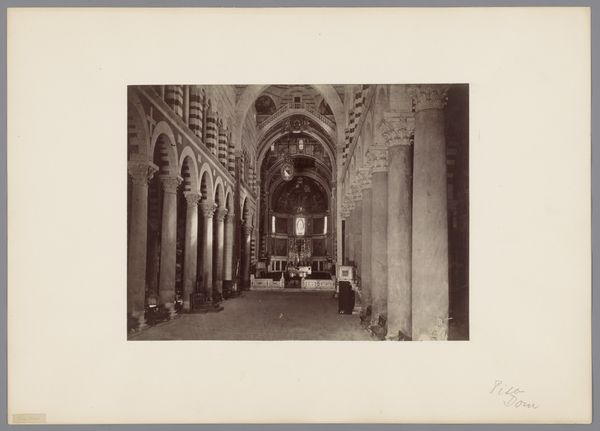
Dimensions: height 394 mm, width 528 mm
Copyright: Rijks Museum: Open Domain
Editor: This engraving by François Stroobant, titled "Kapel van de heilige Helena te Jeruzalem" from 1852, really captures a sense of quiet reverence. I'm immediately struck by the architecture and the soft light filtering through the chapel. How do you interpret the symbolic significance of a space like this being captured in print? Curator: It's fascinating how Stroobant uses light and shadow—the chiaroscuro—to give form to the spiritual atmosphere of the chapel. Notice the columns. They aren't just architectural supports; they are visual echoes of enduring faith. The image presents the architecture almost as reliquary. What feelings are conjured up in you by the people within the image? Editor: They appear contemplative, at rest; almost suspended within the architectural immensity of their surroundings. I guess, the weight of history. But what does the act of recreating it as an engraving add? Curator: The act of engraving, of replication, grants accessibility, democratizing this holy space. Engravings served as vital visual links, spreading images of significant sites and stories across continents, imprinting the collective cultural memory. Look closely at the cross in the image. Consider its omnipresence as a signifier across time and space. What stories does that one symbol carry? Editor: A complex convergence of faith, suffering, and redemption. It’s amazing how a single symbol can evoke such powerful and diverse meanings over centuries. Curator: Exactly! And it shows how these images, even printed ones, become potent symbols in themselves. Each viewing, each recreation is a living link to the past. What do you carry forward after seeing this piece? Editor: I'm left thinking about the chapel as both a physical space and a vessel for shared history and enduring beliefs. Thank you!
Comments
No comments
Be the first to comment and join the conversation on the ultimate creative platform.

